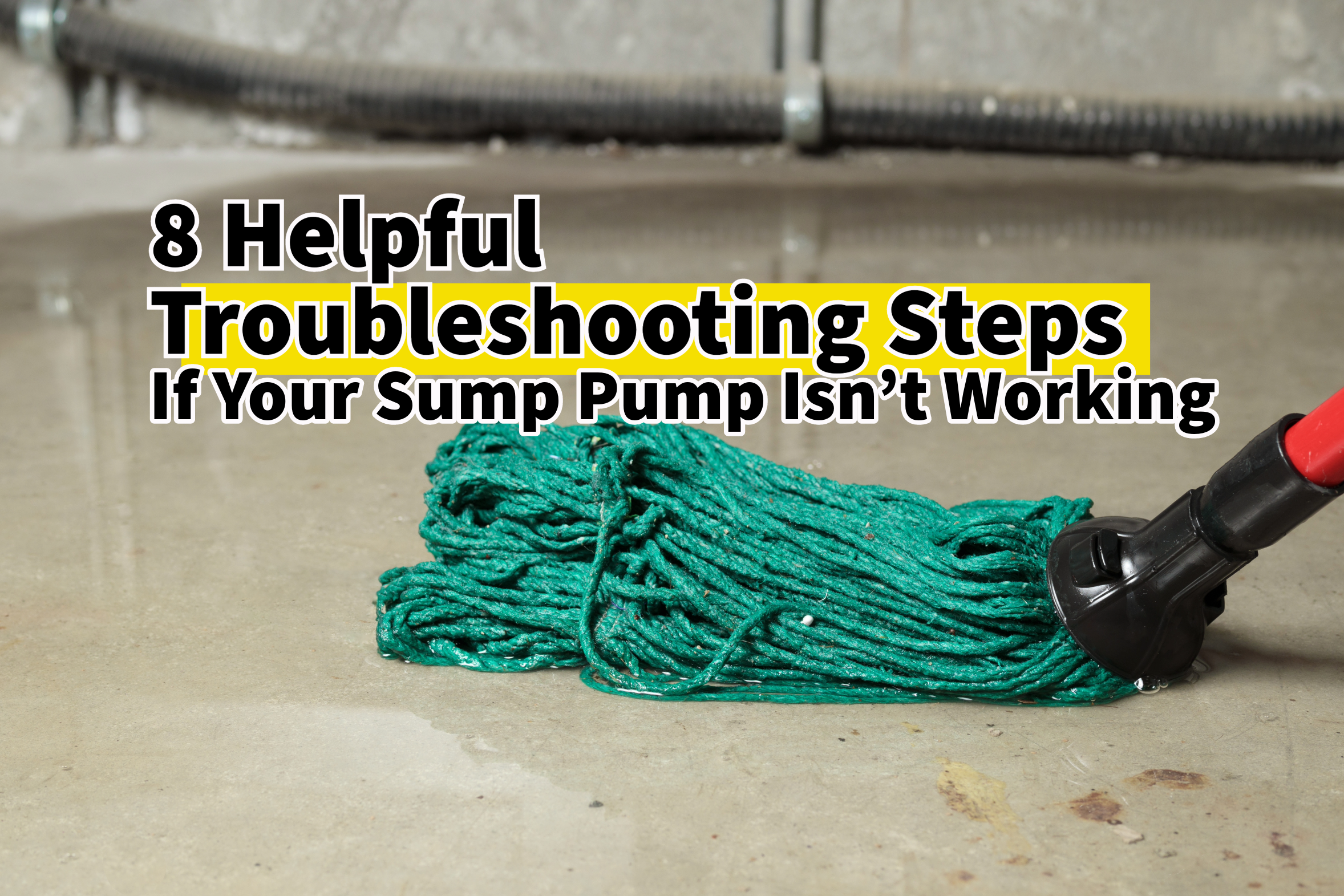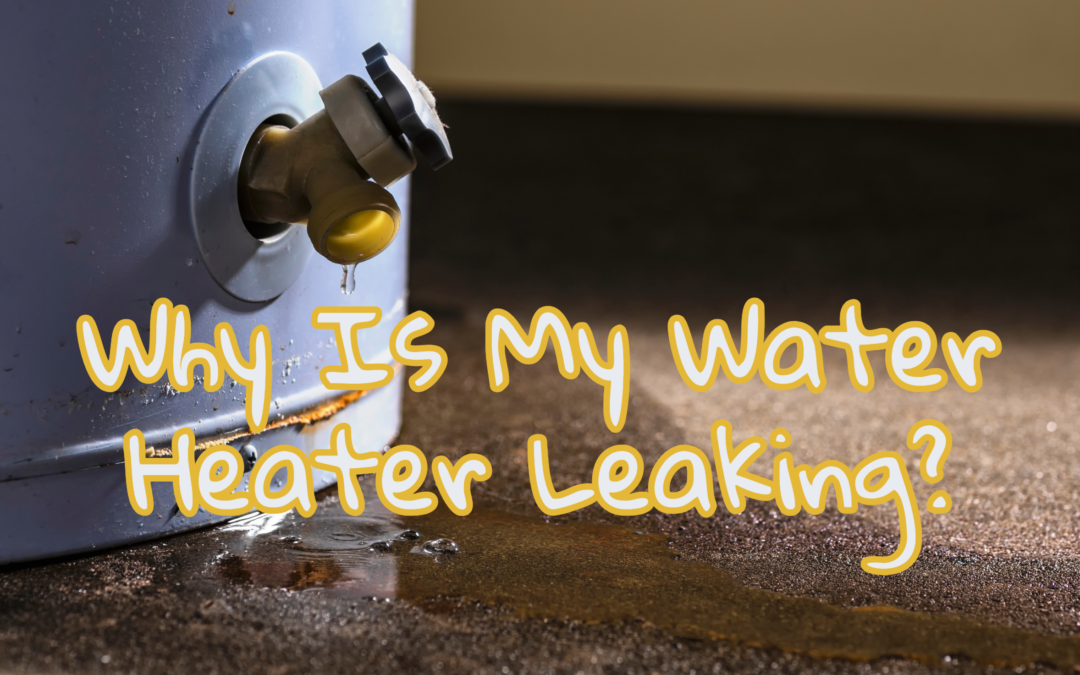Has your sump pump stopped working? With the recent weather, it’s not exactly unusual. We all know that Ohio weather can cause its fair share of weather-induced problems. With the snow melt and rain going strong all winter, sump pump issues are, let’s say… pretty common. And when your sump pump goes out, it’s definitely not something we recommend putting off. Flooded basements and water damage, among other not-so-great possibilities, are not what we want for our valued customers.
Sump pumps are designed to pump water out through the discharge pipe and safely away from your home’s foundation. When a sump pump suddenly stops working, it can quickly lead to a flooded basement and other disasters. But don’t worry, your Five Star Cincinnati Plumbing experts have got you covered! We can help walk you through troubleshooting the issue (and if you’re not dealing with this issue at the moment), even prevent it before it happens. So, why not familiarize yourself with the top 8 common reasons your sump pump might be acting up? Take action today!
FOLLOW THESE STEPS TO IDENTIFY THE ISSUE:
Step 1: Checking on the power supply first of all. Power outages are often to blame when your sump pump goes haywire. Whether it’s a wicked storm or a pesky circuit breaker, if your pump stops working, first make sure it’s plugged in and getting power. If not, test the outlet with another device to see if that’s the issue. You can also try unplugging and plugging in the pump again to restart it. Just remember, unplugging and plugging it back in might only be a temporary fix.
Step 2: Next, try testing out the pump motor. Listen closely for any weird noises coming from the pump motor. If the motor isn’t running, try giving the circuit breaker a check and reset it if needed.
Step 3: Don’t give up just yet. Go ahead and examine the inside of the pump basin for debris as well. Now that you’ve already taken a look at the lid, it’s time to check out the inside and see what’s happening. Take a peek at the sump pump basin for any gunk, dirt, or even ice accumulation. If you spot anything, make sure to clear away any debris that may have gotten in the way of the pump’s impeller.
Step 4: If you’re still having issues, don’t forget to inspect the float switch, too. Check for any debris that needs to be cleared out and make sure the float switch is able to move freely. If the float is stuck or frozen, it won’t be able to activate the pump properly. So, let’s give it a check!
Step 5: Testing the check (also known as the overflow) valve. Make sure the check valve is installed correctly. Just double-check that it’s not blocked by any debris. Sometimes, the pipe above it can get clogged, too, which can mess with the check valve’s function. If the check valve is doing its job, it’ll keep the water from flowing back into the sump pit.
Step 6: Don’t forget about the discharge pipe. If your basement is flooded and the water isn’t being discharged from your home, chances are the discharge pipe is clogged. So, shift your attention to finding and checking the discharge pipe. It may simply need a clog to be cleared.
Step 7: Another thing you’ll want to check is the weeping hole. Your sump pumps should have a small hole on the discharge pipe that’s designed to release air and keep everything running smoothly. When this weeping hole gets blocked, the pump won’t work properly. If there’s a clog in the weeping hole, you’ll need to address it.
Step 8: Lastly, think about the size of your sump pump. If your sump pump is not the right size for your space, it won’t be able to handle large amounts of water. If this keeps happening, it might be time to think about upgrading to a more appropriately sized one for your home. This will help keep sump pump problems from happening again and again.
You’ve got this! With a bit of determination and some DIY troubleshooting, you should be able to figure out the cause of your sump pump problem. Dealing with sump pump issues in cold weather is never fun, but remember, safety first! So, take your time, move slowly, and be careful as you assess your situation and go through each troubleshooting step.
Know When to Seek Professional Assistance:

Still scratching your head, trying to figure out what’s going on? Don’t worry; we’ve got you covered! If these troubleshooting steps haven’t resolved the issue yet, feel free to reach out to us. Our experts will professionally diagnose and get your sump pump up and running again. It’s important to use a licensed plumber to inspect your sump pump and identify any underlying problems. So, let’s get it sorted right away!
Check Out These Sump Pump Tips:
Before we wrap this up, here are a few handy tips to help you keep your sump pump in good shape:
If you want to avoid any issues surfacing with your sump pump, it’s a good idea to make it a habit to give it a quick check every now and then. Just make sure everything is running smoothly, and there are no strange noises coming from it. Make sure you keep the area around the sump pump clear of any clutter, random stuff, or loose debris.
Keep in mind that loose debris can cause all sorts of problems for your sump pump. So, when debris and particles build-up, it can lead to clogs and mess with how your sump pump works. You should always make sure to double-check that the lid on the sump pump pit is securely in place and properly sealed to keep any unwanted particles or loose items out.
Your plumbing system is like the heart of your home, and there’s a lot that can go wrong with it. That’s why it’s important to trust someone who knows what they’re doing. At Five Star Cincinnati Plumbing, we’ve got you covered. Your safety, comfort, and satisfaction are our top priorities. Plus, we guarantee 100% satisfaction!
You can count on Five Star Cincinnati Plumbing for all your plumbing troubles. Call us today at (513) 204-9944, or schedule an appointment online now by clicking here! We are more than glad to help!



